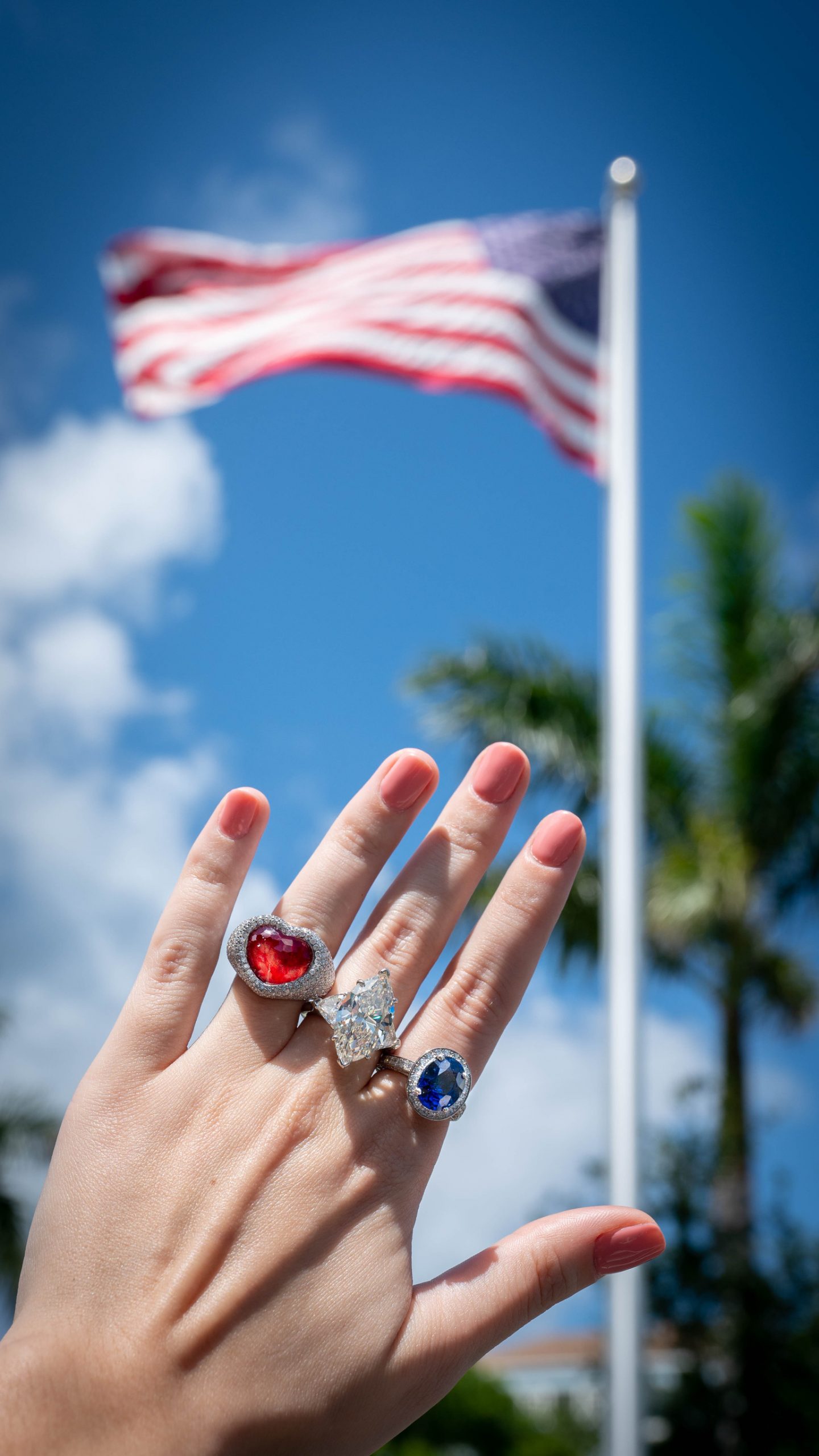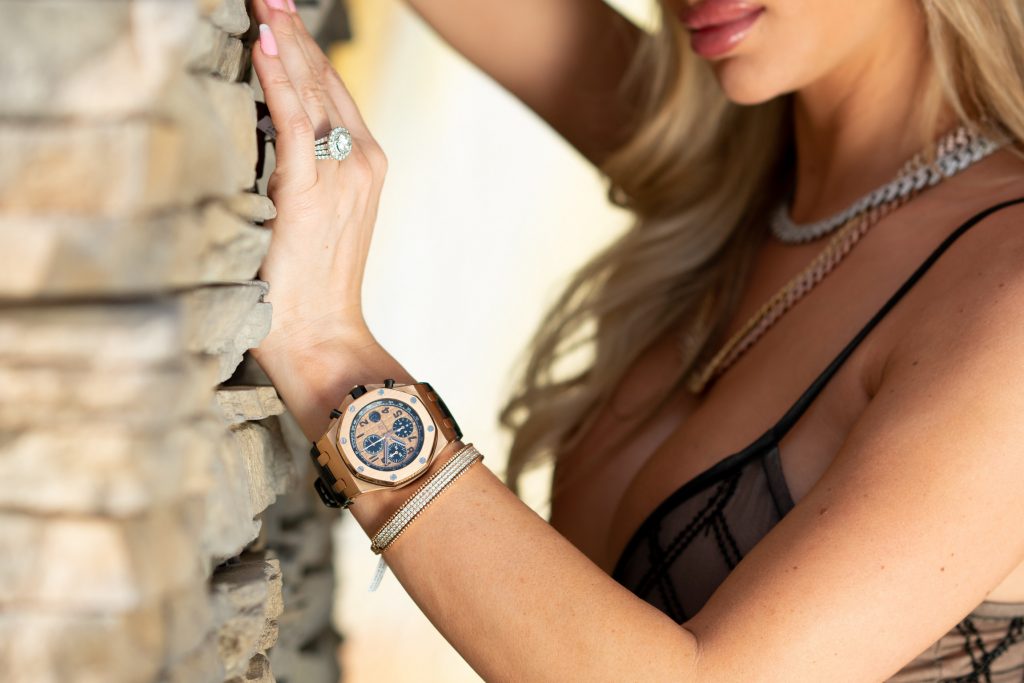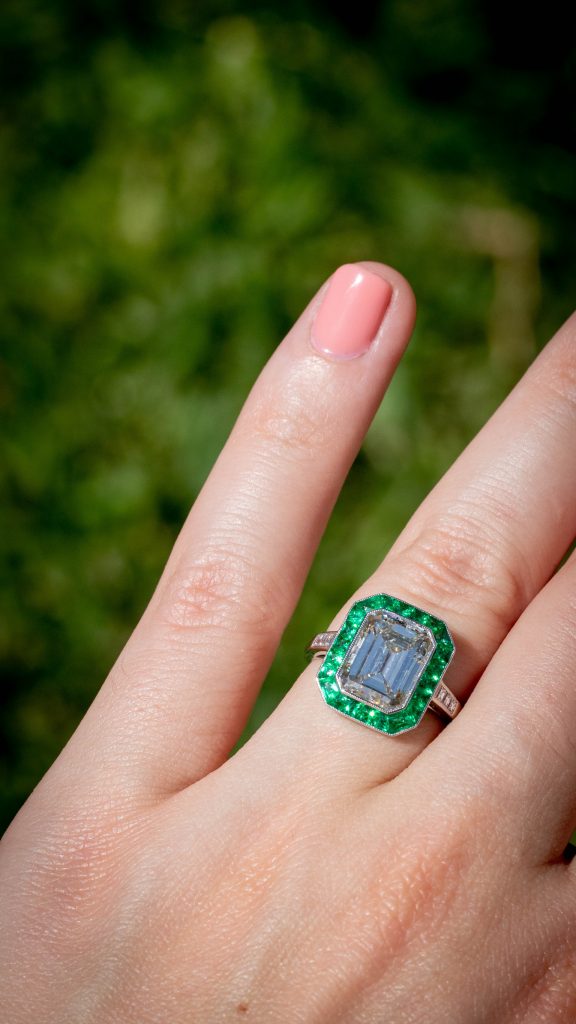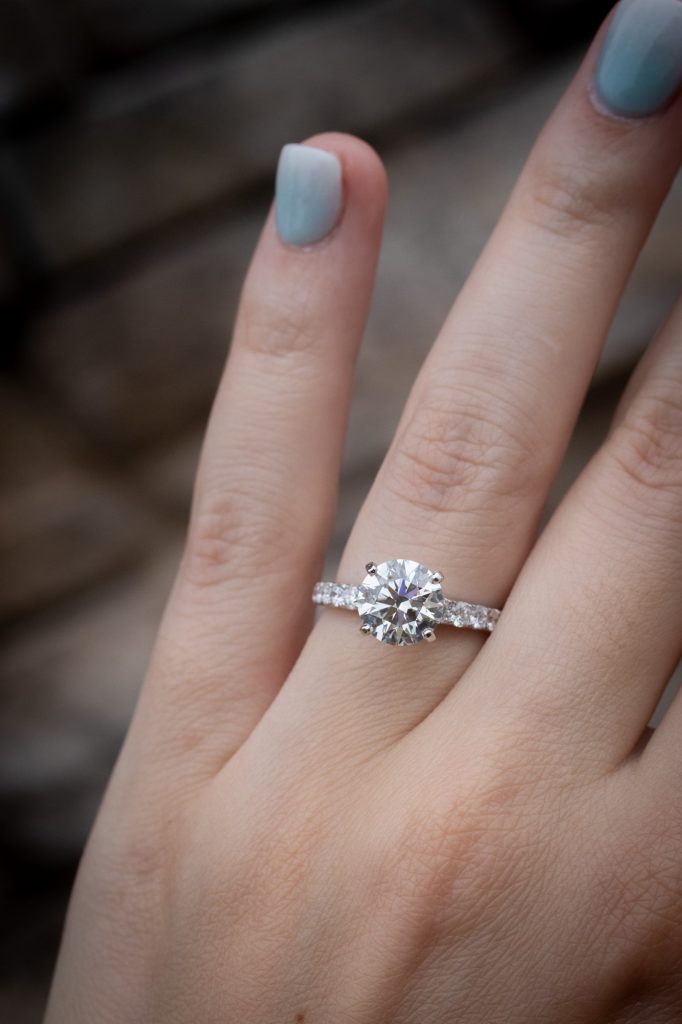All You Need to Know About Diamond Clarity

Diamond clarity is the relative lack of inclusions and blemishes on diamonds. This aspect is another part of the 4Cs quality factor that affects a diamond’s beauty and value. For anyone who ever fiddled with the idea of a diamond engagement ring, you’re no doubt not strange to the 4Cs. They include the cut, carat, color, and clarity of diamonds.
Specifically, the diamond clarity is like a diamond’s fingerprint. This quality factor makes each and every diamond piece distinct.
Introducing Diamond Clarity
Diamond clarity refers to the trait of inclusions or blemishes noticed in or on a diamond stone. According to the diamond clarity chart, each diamond gets a rating based on the clearness or purity of the stone.

Meanwhile, to provide more info about this diamond quality, we draw from the words of two experts. The first expert is Caylee Kozak, the merchandising director at Gemist. Also, we take quotes from Debbie Azar, the president of Gemological Science International.
Keep reading to understand every necessary detail about diamond clarity and the diamond clarity chart. Understand how clarity impacts cost, and many other aspects of this diamond quality factor.
The Crucial Place of Diamond Clarity
According to Kozak, when you purchase a diamond from a certified dealer you’ll get a report. This report reveals the size, shape, location, and number of inclusions in the diamond. In her words, “You commonly hear these referred to as ‘flaws. In a diamond, these inclusions could be anything from nearly-invisible specs, clouds of minuscule crystals, wispy feather-like fractures, or larger formations that appear gray or even black.”
More so, there are a couple of ways you can view these elements known as diamond’s inclusions. Take for example, some people see it as a flaw that could possibly take away from a gemstone’s shine. Kozak says, “Diamonds with many visible inclusions can’t reflect light the same way a cleaner stone can.” In addition, it is possible for an inclusion to breach the surface. According to Kozak, that could affect the diamond’s strength. “This can allow the diamond to chip or fracture more easily,” she says.
On the flip side, several professionals get intrigued with inclusions. Azar says, “Gemologists love inclusions because they make every diamond unique and help to identify it. Because diamonds are minerals formed hundreds of miles below the surface of the earth that undergo immense heat and pressure, it’s inevitable that they trap other minerals and parts of the earth in them as they form. These minerals become telltale birthmarks of the diamond’s origin.”
Into the Diamond Clarity Chart

Azar explains that in 1953, the jewelry industry approved an 11-factor scale for assessing a diamond’s clarity. The list starts from the least included, to most included. On that list, you find measurements like:
- Flawless (Fl);
- Internally Flawless (IF);
- VVS1 (Very Very Slightly Included 1);
- VVS2 (Very Very Slightly Included 2);
- Very Slightly Included 1 (VS1);
- Very Slightly Included 2 (VS2);
- Slightly Included 1 (SI1);
- Slightly Included 2 (SI2);
- I1 (Included 1);
- I2 (Included 2), and
- I3 (Included 3) .
Azar adds saying, “The diamond clarity chart breaks down how visible inclusions are with 10x magnification and with the unaided eye, starting with no inclusions being visible even under 10x magnification for the Fl and IF clarities, and ending with inclusions being visible to the unaided in the I1, I2, and I3 categories.”
Therefore, when evaluating diamond clarity, you may see names such as minute, minor, or noticeable. Again, Azar adds. “VVS diamonds have minute inclusions that are extremely difficult to find under 10x magnification. VS diamonds have inclusions that are difficult to find under 10x magnification. SI diamonds have inclusions that are noticeable under 10x magnification but not visible to the unaided eye. Finally, clarity diamonds have inclusions visible to the unaided eye.”
Diamond Clarity and the Cost of a Diamond
According to Kozak, clarity in diamonds influences the price of a gemstone in two main aspects. The first of which is that diamonds that are nearly completely free of inclusions are impeccably rare. Hence, they get priced much higher.

Kozak adds saying, “Secondly, clarity matters more in step-cut diamonds like emerald and Asscher cuts because their wide facets create a sort of window-mirror effect and inclusions are much more visible. Brilliant-cut diamonds have many more facets that help to hide inclusions.”
The Right Budget for an Engagement Ring
Again, Azar explains that clarity’s effect on cost gets innately linked to the diamond’s other 3Cs (carat, color, and cut). In her words, “While the clarity can significantly impact a diamond’s cost, many inclusions typically cannot be seen by the naked or unaided eye. With regard to clarity alone, fewer inclusions in a diamond will typically have a higher price, but again, the price is based on all the 4Cs as opposed to one single measurement.”
Gemologists Grading Clarity of Diamonds
Considering the technical aspect of clarity of diamonds, gemologists turn to impressive technology to infer the grade of a diamond’s clarity. Explaining the process, Azar says, “They use a binocular microscope to find the inclusions, and then use a 10-magnification loupe to determine the final clarity grade. Diamonds are judged at 10-power magnification, which means the lens magnifies the diamond to look ten times larger than actual size.”
Moreover, understand that the types of inclusions that may exist come in vast varieties. Also, every diamond is different in its way. Based on these, Azar fosters a preference of your stone’s individuality. She says, “From included minerals such as garnet, olivine (peridot), and other diamonds, to twinning of the diamond crystal (called twinning wisps), and even star-shaped clouds, diamond inclusions are a source of fascination and beauty. So, when you look at the inclusions in your diamond, remember they are a birthmark of the diamond’s origin, born billions of years ago deep in the earth.”
Tips to Get the Best Diamond Clarity When Shopping

It is one thing to understand what the clarity of diamonds is. It is another to get the best out there. To do the latter, these tips will help you shop smartly and get the best.
- Don’t tag inclusions and blemishes as “flaws”
- With clarity of diamonds, less is always more
- Stick to the global standard by learning the grades on the GIA Diamond Clarity Chart
- Discover how GIA grades clarity of diamonds
- Treatments might enhance the clarity of diamonds. But they are not all good
- Some types of inclusions can cause a diamond to get more unprotected from damage
- For certainty over the clarity of diamonds, get a GIA grading report (GIA Diamond Clarity Chart)
- Don’t Tag Inclusions And Blemishes As “flaws”
You may hear some jewelry lovers portray inclusions and blemishes as “flaws.” However, for most gemologists, they are instead important identification tools. Gemologists believe Inclusions can assist in the detachment of some natural diamonds from synthetic diamonds.
Also, because most diamonds possess a distinct mixture of inclusions and blemishes, these clarity traits function as fingerprints. With them, each diamond gets its own individuality. So, do you wonder whether your diamond’s laser inscription can pass as a blemish or inclusion? Your answer is neither. Do not see a laser inscription a a clarity trait.
With clarity of diamonds, less is always more
When it concerns clarity of diamonds and value – like diamond color and value – less is always more. Therefore, diamonds with little or no clarity traits are rare. Also, keep in mind that rarity drives price. Hence, they get priced higher than others. Additionally, diamonds void of any visible clarity characteristics under a 10× jeweler’s loupe are the ones we call “flawless.” Such kinds of diamonds are so rare that many jewelers may never see one throughout their lifetime.
Meanwhile, less costly diamonds often come with inclusions that are visible to the naked eye. The majority of these faceted diamonds fall between the two extremes. Oftentimes, they come with inclusions noticeable only with magnification.
Stick to the global standard by learning the grades on the GIA Diamond Clarity Chart
The GIA Diamond Clarity Chart describes diamond using standard terminology created by GIA in the 1950s. Hence, the grades come, in part, from the visibility of inclusions and blemishes with 10× magnification by a drilled grader.
More so, the GIA Diamond Clarity Chart helps to decide what the clarity of diamonds will be. The GIA Diamond Clarity Chart features six categories. A few of these categories get subdivided to generate an aggregate of 11 distinct grades for natural diamonds. The grades range from Flawless to I3. We mentioned them earlier. Now, here is a brief detail about each grade.
- Flawless (FL): Comes with zero inclusions and zero blemishes noticeable under 10x magnification
- Internally Flawless (IF): Has zero inclusions and only minor blemishes noticeable under 10x magnification
- Very, Very Slightly Included (VVS1 and VVS2): Minimal inclusions that vary from extremely difficult (VVS1) to very difficult (VVS2) to detect under 10x magnification
- Very Slightly Included (VS1 and VS2): Insignificant inclusions that vary from difficult (VS1) to relatively easy (VS2) to detect at 10x magnification.
- Slightly Included (SI1 and SI2): Obvious inclusions that are easy (SI1) or very easy (SI2) to detect at 10x magnification
- Included (I1, I2 and I3): Inclusions that are noticeable under 10x magnification and often visible with the naked eye. That alone may impact transparency and sparkle
Below are two other phrases you might come across and need to know:
Eye clean is an industry phrase to denote a diamond whose inclusions cannot be detected with the naked eye. Certain shoppers may say, “If I can’t see an inclusion or blemish, the diamond is beautiful enough for me.” In such a case, an eye-clean diamond may fit the budget. However, GIA does not use this phrase.
SI3 is a clarity grade that some diamond grading labs issue. Note that GIA does not, even after studying the SI3 suggestion at various times over the years. Still, GIA sees no reason to alter its long-standing and globally recognized diamond grading system.
Discover how GIA grades clarity of diamonds
A GIA diamond grader evaluates the diamond utilizing the best her trained eye can offer. Also, she uses a 10× jeweler’s loupe. Occasionally, she might use a microscope at enhanced magnification. Nonetheless, the decisive clarity grade always gets defined by the diamond’s impression under a 10× jeweler’s loupe.
To determine the grade of a diamond clarity, the grader takes into account five traits:
- Location
- Size.
- Relief
- Nature
- Number
Treatments might enhance the clarity of diamonds. But they are not all good
Jewelers sometimes attempt to boost the clarity of diamonds to make stones more desirable and worth more. Of all the methods, two are most popular. They are Laser Drilling and Fracture Filling. Although, these treatments might enhance the diamond clarity, it doesn’t get rid of the preceding issue.
Some types of inclusions can cause a diamond to get more unprotected from damage
Naturally, if a diamond possesses substantial durability issues, it can’t endure the friction and pressure of the cutting operation. Nevertheless, specific types of inclusions, particularly if they’re close to the girdle, can cause a cut diamond to be more powerless against damage. A good example is when the stone gets hit exactly on a feather or other surface-reaching inclusion. In such cases, the diamond might chip.
Discover how GIA grades clarity of diamonds
The GIA Diamond Grading Report, the GIA Diamond Origin Report and the GIA Diamond Dossier provide an accurate, objective review of diamond clarity alone. Also, this report grades other “Cs” of diamond quality the same way.
Besides, a GIA Diamond Grading Report and GIA Diamond Origin Report comprise a plotting diagram that points out the diamond’s inclusions and blemishes. With a GIA Diamond Clarity Chart, you see the diamond’s shape and facet arrangements from two perspectives. First is the crown, then, the pavilion.
Additionally, the GIA Diamond Clarity Chart can also help in diamond identification. You can’t find two diamonds below Flawless and Internally Flawless with exactly the same combination. Their placement of clarity traits will always differ.
